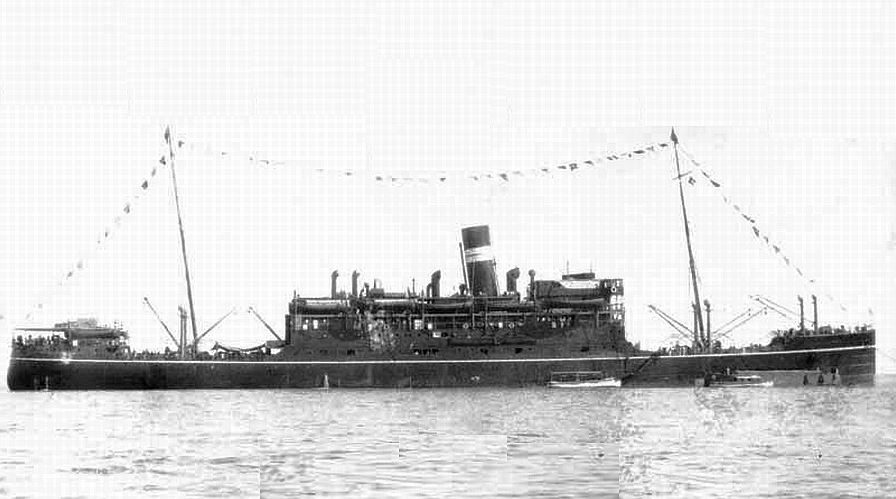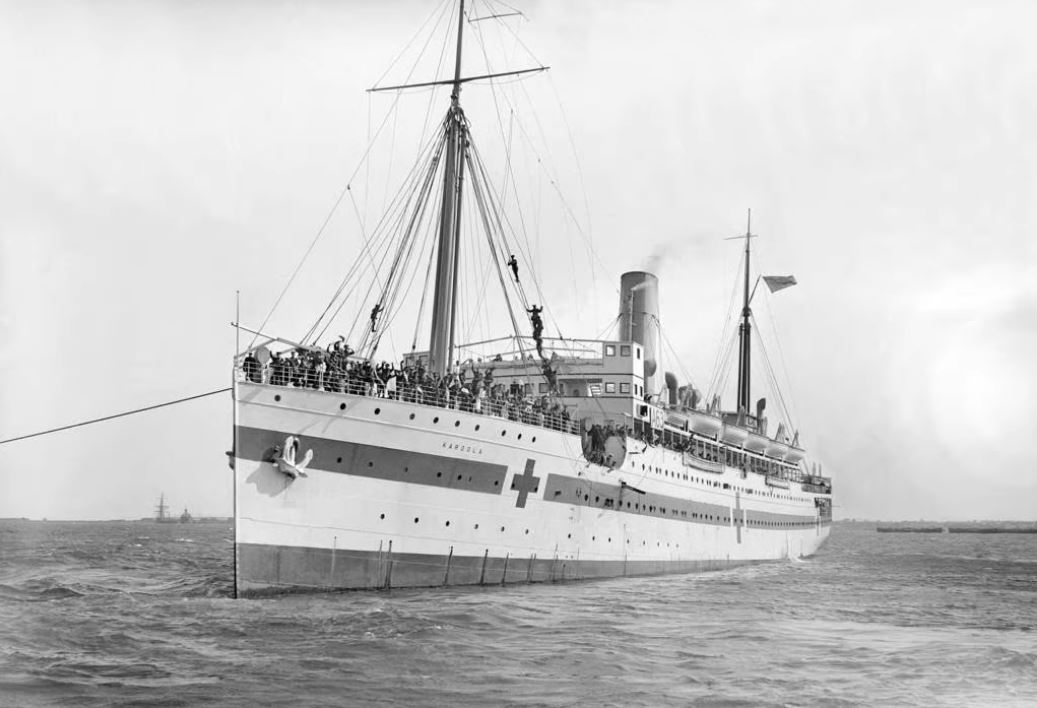Difference between revisions of "SS Karoa"
From Our Contribution
| Line 7: | Line 7: | ||
| shipowner = British India Steam Navigation Co Ltd, Glasgow | | shipowner = British India Steam Navigation Co Ltd, Glasgow | ||
| shipbuilder = Swan, Hunter & Wigham Richardson Ltd | | shipbuilder = Swan, Hunter & Wigham Richardson Ltd | ||
| − | | shipyardnumber = 946 | + | | shipyardnumber = 946 (Neptune Yard) |
| shiplaunched = 3 Dec 1914 | | shiplaunched = 3 Dec 1914 | ||
| shipcompleted = March 1915 | | shipcompleted = March 1915 | ||
| Line 29: | Line 29: | ||
==Remarks== | ==Remarks== | ||
| − | Built for the British India Shipping Company intended for routes | + | Built for the British India Shipping Company and intended for routes in the tropics, she was capable of carrying 44 1st class passengers, 64 second class, and 1,471 deck passengers in civilian use. |
| − | + | ''Karoa'' was requisitioned by the Admiralty for use as a troop ship in March 1915 before being returned to its owners in 1919. She was again requisitioned in September 1940 for use as a Personnel and Military Store ship, and caried the Australian contingent from Singapore to Rangoon in July 1941 In March 1944 it was converted into a hospital ship and it was in this role that in 1945 the ''Karoa'' carried a load of Australian POWs home from Singapore. | |
Latest revision as of 14:16, 2 October 2023
Remarks
Built for the British India Shipping Company and intended for routes in the tropics, she was capable of carrying 44 1st class passengers, 64 second class, and 1,471 deck passengers in civilian use.
Karoa was requisitioned by the Admiralty for use as a troop ship in March 1915 before being returned to its owners in 1919. She was again requisitioned in September 1940 for use as a Personnel and Military Store ship, and caried the Australian contingent from Singapore to Rangoon in July 1941 In March 1944 it was converted into a hospital ship and it was in this role that in 1945 the Karoa carried a load of Australian POWs home from Singapore.
Returned to her owners again in October 1946, before being deliverd to Steel Corp, Bombay in 1950 to be broken for scrap.

